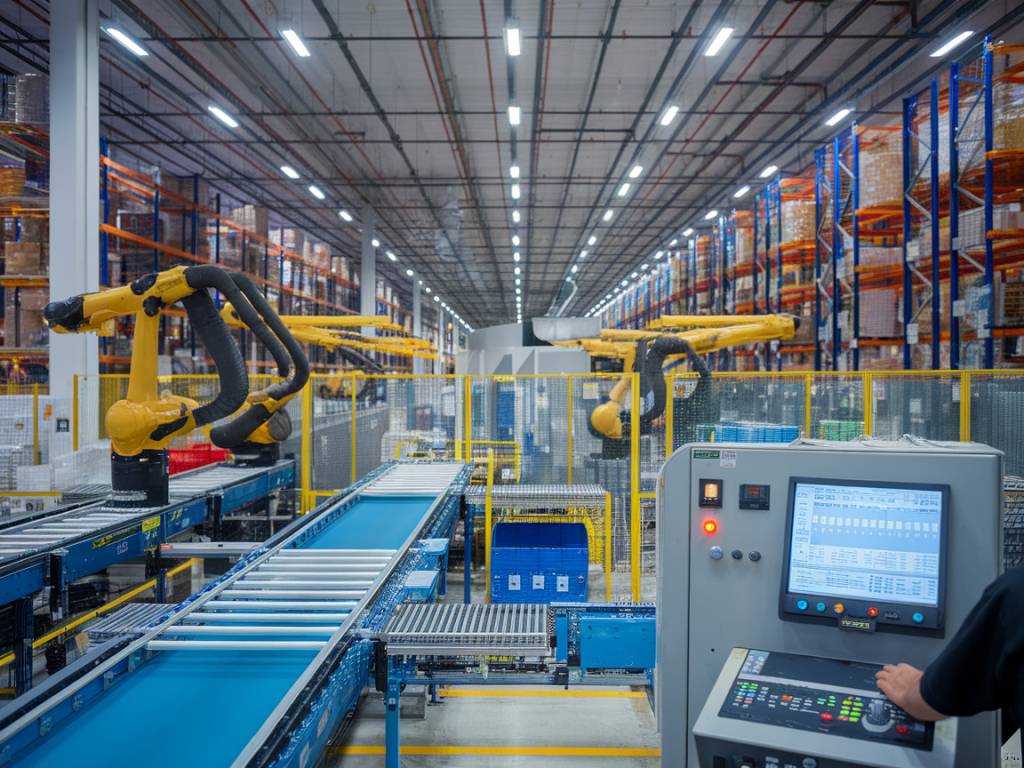In today's rapidly evolving market, businesses are constantly seeking innovative ways to optimize their operations and maximize efficiency. One of the most transformative technologies reshaping the logistics and supply chain sector is the Warehouse Execution System (WES). This dynamic solution integrates with existing warehouse infrastructures and provides unparalleled control over operations. Let's delve into how a WES can revolutionize your warehouse operations.
Understanding Warehouse Execution System
A Warehouse Execution System is a software solution that manages, optimizes, and coordinates a warehouse's operations from start to finish. Unlike traditional Warehouse Management Systems (WMS) or Warehouse Control Systems (WCS), a WES offers real-time capabilities that are intricate and adaptable. It handles everything from inbound logistics, storage, and picking to outbound shipment, ensuring each operation runs seamlessly.
The increasing complexity of supply chains, driven by e-commerce growth and consumer demand for faster delivery times, necessitates robust solutions to manage warehouse operations effectively. The WES sits at the intersection of WMS and WCS, offering functionalities that blend inventory management with process automation.
Key Benefits of Implementing a WES
The introduction of a WES provides several substantial benefits, paving the way for a more efficient and agile warehouse environment:
- Enhanced Visibility and Control: A WES provides real-time visibility into warehouse operations, allowing managers to monitor and adjust processes as needed.
- Increased Throughput: By optimizing workflows and coordinating tasks, a WES can significantly boost the overall throughput of the warehouse, ensuring orders are fulfilled swiftly.
- Labor Efficiency: Automated task assignments and advanced algorithms minimize idle time and streamline labor allocation, improving productivity.
- Error Reduction: The system's real-time monitoring features help in reducing human errors, leading to more accurate order fulfillment and inventory management.
- Scalability and Flexibility: A WES can easily adapt to changes in demand, allowing warehouses to scale operations smoothly.
Streamlining Operations with Advanced Technology
The integration of advanced technologies in a WES allows for smarter, data-driven decision-making. By processing data from various points within the warehouse, the system can predict trends, adjust schedules, and optimize resource allocation. This transforms the way warehouses operate, moving them towards a more proactive approach rather than reactive.
Machine learning and artificial intelligence are central to these advancements, enabling the system to continuously improve operations without manual intervention. A responsive environment is created where tasks are prioritized dynamically, ensuring optimal use of resources at all times.
The Future of Warehousing: Adaptability and Innovation
One of the most significant advantages of adopting a WES is its adaptability to future technologies and warehousing trends. As supply chains become more digital, new devices, robots, and platforms can seamlessly integrate with the system, ensuring your warehouse remains at the forefront of innovation.
Furthermore, the system's modular nature means that features can be added or adjusted according to warehouse needs and industry developments, ensuring that the technological evolution of the warehouse infrastructure remains agile and cost-effective.
Choosing the Right System for Your Warehouse
Implementing a WES isn't just about technology; it's about finding the right solution that aligns with your operational goals. Considerations should include the system's compatibility with existing infrastructure, its ability to scale with business growth, and the ROI potential. It's essential to engage with vendors who not only understand your industry's intricacies but can also offer tailored solutions that will drive your business forward.
Investing time in selecting the right warehouse execution system can be the difference between simply adopting new technology and transforming your warehouse operations entirely.
Preparing Your Team for the Transition
When integrating a WES, it's crucial to ensure that your human resources are ready for the transition. Training programs should be implemented to familiarize staff with the new system's functionalities. This ensures a smooth transition with minimal disruptions to operations.
The implementation of a WES also marks a cultural shift. Employees need to embrace data-driven practices and open themselves to learning new skills that enhance their roles within the warehouse. Such an approach not only maximizes the potential of the WES but also future-proofs your workforce.
Case Studies: Success Through Innovation
Many warehouses globally have successfully integrated a WES, witnessing remarkable improvements in efficiency and output. A notable example is a retail giant that reported a 30% increase in order fulfillment speed within six months of implementation. Another case saw a logistics company reduce errors by 40%, drastically improving customer satisfaction levels.
These examples underscore the transformative impact that a WES can have, validating the investment and effort involved in its implementation. As more businesses share their success stories, it becomes evident that embracing this technology is no longer just an option but a necessity for those wishing to remain competitive.
Final Thoughts on Revolutionizing Efficiency
To remain competitive in a world characterized by rapid technological advancement and evolving consumer expectations, warehouses must be leaner, smarter, and more adaptable. Integrating a Warehouse Execution System is a strategic step that can overhaul operational efficiency, reduce costs, and ultimately transform your business into a leader in your industry.
As companies continue to recognize the system's vast potential, WES adoption will likely become standard practice, fueling the next wave of innovation and efficiency in warehouse operations.
